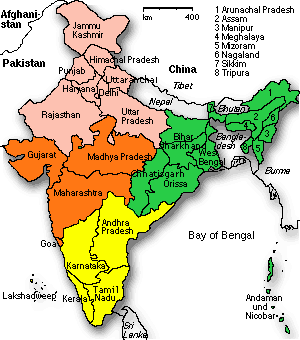We are a team of high school students who wish to make a difference in our country :)
Team Members:
We have currently 11 members in our group:
Naveena, Vidya, Benita, Rachel, Janani, Priyadarshini, Anandavalli, Priya, Karthiga, Nivedhitha and Meenakshi. We are surely open for more! :)
It all started when we, the students of the last bench were trying to kill the boredom which was almost killing us. One bored friend said suddenly "JNMA", and I, trying to create a distraction with that, asked "What's JNMA? Jeevana's Naughty Members Association?" Okay, that wasn't really a joke, but I meant it to be that way. What my friend really meant was that the first letters of our names were J, N, M and A. And from that time onwards, we became the JNMA and true to our name, did all we can to create some noise.
But our 'lethargic' attitude to studies changed as the exams drew nearer. That was when we adopted the logo - a star with an angel and a devil, and the JNMA sign. The devil represented our naughty side and the angel, our nice side [which involved exams, friendship, etc.] Soon, the nice side was widened to include helping others, spreading patriotism among people and all that sort of things. And on 14th Nov., our aims underwent a total change. Don't ask me how, even I'm not sure. JNMA became more nationalistic and less 'lethargic'.
So, we decided to form an organisation to do something... anything for improving things around us, in our country. We changed the logo and even the name… We are now C.H.A.N.G.E – The Citizens Helping A Nation Grow Extensively
FAQ
The decisions we have taken are a bit different, so they have naturally lead to quite a lot of questions and confusions. CHANGE was at first a gang and now, it's a serious group. No wonder there are some hair-splitting moments when you have no idea as to where you are going. I hope to resolve this problem by having a tab full of the 'Frequently Asked Questions' by ourselves and others around, to save the trouble of giving lengthy explanations every time. This is mostly for our clarity than for anyone else's :)
Q: What is the aim of CHANGE?
A: To help everyone who is in need of it and to help our country, by all means possible.
Q: Why this decision?
A: It is not the right thing to do, to turn a blind eye on all the problems around us. And so, we have chosen what is right.
Q: Are we trying to change the world?
A: Maybe, maybe not. In the past, the people who were crazy enough to think that they could change the world, were really the ones who did. We are not trying to make a difference, because, what we are itself makes a difference in this world ;).
Q: Do you think it is possible?
A: Right now, it is impossible to cure some types of cancer. Soon, it will become possible. Before the Wright brothers invented the plane, any object other than a hot air balloon flying in the air, was thought to be impossible. Impossible is just a big word thrown out by small men who find it easier to live in the world they have been given, than to explore the power they have to change it. Impossible is not a declaration. It is a dare, a challenge. Impossible is temporary. Impossible is NOTHING. [And this is the truth, not a couple of words put together to make them sound impressive.] A Buddhist monk once said, "Help whenever possible. It's always possible."
Q: Won't CHANGE clash with studies?
A: Why should it? Chatting or playing or sleeping in the class does not clash with studies, does it?
Q: What about the obstacles on the path?
A: Life is full of obstacles, some of which would want us to quit along the way. It is during those times that we need to remember that the focus must be on the goal, not on the insignificant things on our way.
Q: What if we don't succeed in our task?
A: There is no failure or success in what we have decided to do. CHANGE does not stop with school. It will go on for the rest of our lives. Having committed ourselves to this job, is itself an achievement. There is no end to what we can achieve. Still, in every endeavor, it's okay if we fail or if e don't succeed. But it's not okay if we don't try or if we don't put in enough efforts or if we quit.
Q: What's the future of CHANGE?
A:Well, we haven't really decided that yet, but it's certain that we'll do better when we leave school and go to a college. We'll certainly have more exposure, opportunities and freedom.







 08:08
08:08
 Unknown
Unknown



